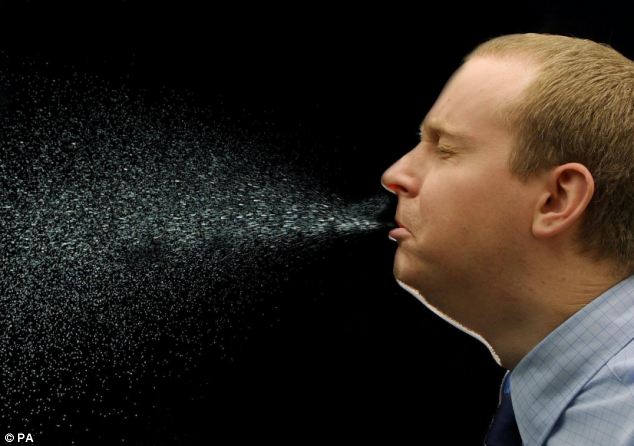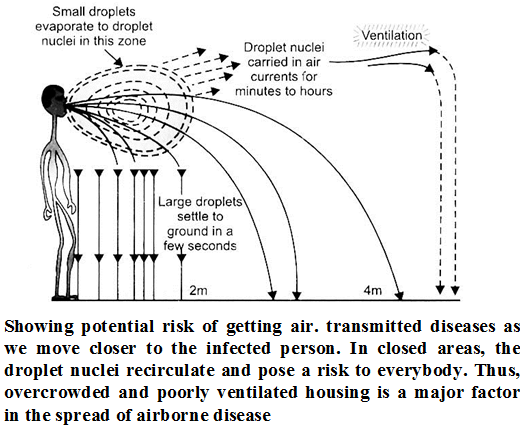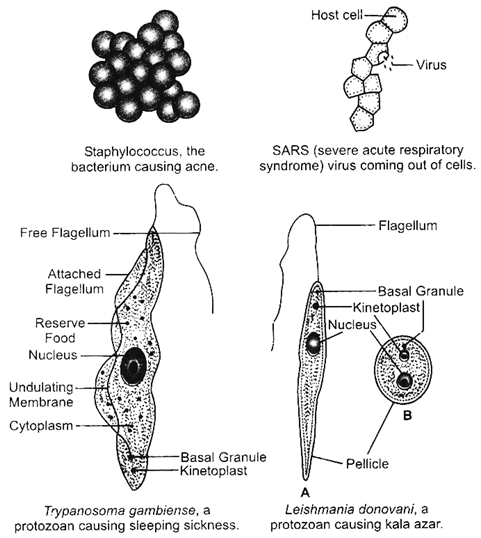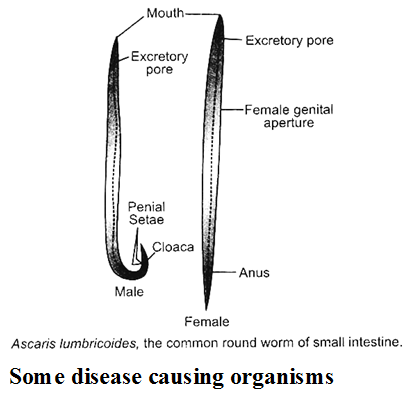How Diseases are Spread
Means of Spread
Infectious diseases are also called communicable diseases because they can spread from infected person to healthy person(s). The means of spread of these diseases are different for different pathogens.
Direct Transmission :
The disease causing microorganisms (pathogens) are transmitted from infected person to healthy person (s) directly in the following ways :

- Physical contact with infected person : The pathogens of diseases like chicken pox, small pox, ring worm etc. are spread through physical contact with infected person or through articles of use.
- Sexual Contact : Few infectious diseases such as syphilis, gonorrhoea (both caused by bacteria) and AIDS (caused by virus) are transmitted by sexual contact from one partner to the other.
- Contact with soil : Many pathogens can enter the human body from soil through injuries (e.g., tetanus)
- Animal bites : Communicable diseases can also spread through the animal bites. For example, rabies virus enters the human body by the bite of rabid dog or monkey to cause rabies.
 Indirect Transmission :
Indirect Transmission :
It involves spread of pathogens of some diseases through some intermediate agents. Indirect transmission occurs in the following ways :
- Through air : Infectious microbes that cause common cold, tuberculosis, pneumonia etc. can spread through air from infected person.
- Through contaminated food/water : Many infectious diseases can also spread through intake of contaminated food/water. For instance, cholera-causing microbes enter new host through the water they drink and cause disease in them.
- Through vectors : Many animals living with us carry the infecting agents from an infected person to other potential host. These animals act as intermediate and are termed vectors. The vectors are, therefore the carriers of the disease-causing pathogens. The most common vectors are the insects.
- Houseflies carry the causative organisms of cholera, typhoid, dysentry and tuberculosis on the legs and mouth parts from faeces and sputum to the food and drinks. The latter, if taken, cause infection in others.
Orgns-specific and tissue-specific manifestations :
Compared to any type of pathogenic microbe, our body is quite large. Thus, there are many possible regions, tissues or organs, where a pathogenic microbe can go and stay. Different species of disease-causing microbes have evolved to move and reach to various parts of the body. In parts, this selection is connected to their point of entry into the body. Few cases are cited below :


- If disease-cuasing microbes enter with air via the nose, they are likely to go to the lungs, e.g., bacteria which cause tuberculosis of lungs.
- If the pathogenic microorganisms enter via mouth, they are likely to stay in the lining of the gut (e.g., thyphoid-cuasing bacteria) or these pathogens can also go to the liver, e.g., the viruses that cuase jaundice.
- Virus that causes HIV infection, enters the body through sexual organs during sexual contact and then tends to spread to lymph nodes throughout the body.
- Malaria-causing microbes are transmitted through mosquito bite, and move to the liver and then to the red blood cells (R.B.Cs).
- Similarly, virus that causes, Japanese encephalitis (brain fever) enters the body through mosquito bite, However, it will go to reside and infect the brain.